The fishing accident: A weird thing happened this evening. Another boat showed up way out here. Two people. Fishing I guess, although when we asked them about their visit here, they couldn’t seem to explain it. They came to our boat in a small zodiac off their bigger boat. As they got closer I could see one of them holding his hand up. Even closer I could see lots of blood. Then I saw a HUGE hook, imbedded all the way in his wrist. It was one of those jumbo tuna fishing hooks. For as bad as the thing looked, he was taking it in stride, even smiling as he approached our boat –though I’m sure he was in LOTS of pain. Luckily we have two nurses and a doctor on board! Their lucky day. The doc took care of his impressive wound, removed the hook with huge metal cutters, and disinfected it. As a thank you, they left us a 120 pound yellow fin tuna! Then they drove off into the sunset. It was bizarre.
My goal today was to get my last two benthic (coral/algae) surveys and the last three Rainbow chub (a fish) we needed for DNA work. They are tough to get!!! Scott took the spear first. The site was beautiful – so many fish, and SO SO much coral. I couldn’t wait to see the results of the data to see if there really was as much coral as it seemed. The reefs here appear very healthy. Scott hung out looking for the rainbow chub while I payed out my 50 meter tape. These transects are exhausting!! Every 10 centimeters, I put my finger on the tape and take it to the bottom, and record what is right under my finger. I have to do that about 500 times for just ONE transect!! You see why two of them per site is already a lot. For the fish transects I swim 50 meters, and count fish all the way to the surface (I am at about 45 feet), and out to 2.5 meters on each side of me. So the box‚ I count in is about 15 meters high, 5 meters wide and 50 meters wide, a big area! I have to count ALL the fish I see. I swim once to count the fish swimming above and around me, and I swim back a second time to count all the little fish that are in and on the coral bottom. I generally counted around 500 fish on each dive!!
While I was working, I would occasionally catch a glimpse of Scott still hanging out waiting for the Rainbow chub! Where are they? I could tell he must be getting frustrated. A hunter with no prey!! Suddenly he and I saw the Rainbow chub at the same time. I was working so I turned back to my transect feeling good that he finally had something to do! When I finished my transect I looked up to see that he had one fish. Yeah!! We only need 2 more! I also saw some good sized silver tip sharks at that time (less problem with the Morays since Scott was hunting higher up in the water column). Suddenly, more chub. Scott drew the rubber on his spear taught, aimed – fire! GOT IT! But wait, that fish wiggled so hard it got off the spear. It was bleeding a lot, and headed straight down for the bottom. Like a flash of lightening, the slowly circling sharks bolted into action. One of them shot so fast to the bottom after that fish I could hardly tell what it was. I have NEVER seen a shark swim that fast. Then another, then a third shark. Then a Trevally Jack shot out of the blue. Now I know what they mean by a feeding frenzy. They truly changed to predatory bullets. That poor fish never had a chance. It would be torn to pieces by frenzied predators.
Meanwhile, back on the boat plenty of excitement. Harry got bit really badly by a Moray eel. Doctor Dave got out his doctors kit and went to work. 6 stiches total! Captain Gordon named the reef Harry’s Moray in honor of his injury.
Also, we were discovering that people had seen some decent sized sharks – some big ones really. And not only were they big, but curious too – not something you want from a big shark. One group of divers saw a school of about 10 BIG hammerhead sharks down at about 120 feet. Others said they had seen some big silvertips, not the smaller pups‚ we had been seeing. I checked in on Harry, noted the shark stories and jumped on the Zodiac.
So we still need two more rainbow chub. We have ONE MORE dive to finish. I managed to get all my transects done so decided to take my last dive as a fun exploratory dive where I didn’t have to work the whole time. I even took my camera! I told Scott: no big deal if we don’t get any more chub. We had three (our goal was 5). He looked at me funny and said I plan to get it all done, no almost for me. He grabbed a spear and headed for the boat. My competitive nature took over, and I grabbed the other spear just in case. The problem was, and I didn’t really think through this, we only had one bag to put the fish into, and Scott took it.
I decided to spend a bunch of time shallow on this dive to see if I could find some blennies and other fish I haven’t seen much of. I swam to about 20 feet of water and saw a really big thing stick up out of the reef towards the surface. As I swam closer, I saw an anchor!!! A REALLY old anchor, left there by a ship many many years ago. It was a giant iron anchor – the type the Spanish galleons used to use. It was super cool and I swam around it and took some pictures. (* note from Captain Mike – Clipperton Island is named after the English pirate, John Clipperton, who based his ship here for attacks on “Manila galleons” that had left Aculpulco and tracked south to pick up the tradewinds for their voyage across the pacific ocean. Interestingly, the lagoon was still open in those days and he was able to anchor inside. The lagoon is entirely surrounded by the atoll now. We can only speculate that Clipperton must have attacked a spanish galleon and sailed it back to the atoll to strip it of riches *).
As I neared the drop-off, I saw a shape. I continued and looked more closely. There it was again. It was pretty big. Definitely swimming. Now it’s approaching me. Wow!! It’s pretty big! It’s a silver tip shark! Finally one that is the size that Clipperton used to be famous for its big sharks. I was so excited to see such a beautiful animal. It was so beautiful. To see a large shark move through the water is to see power, grace, and beauty. It’s mesmerizing really. I watched for what seemed like a long time. I came out of my trance to realize this animal can also be dangerous, and Scott was somewhere nearby spearfishing to say nothing of my own goal to get one elusive hard-to-get Rainbow chub. If you read about silver tip sharks in the book it says “can be dangerous in the vicinity of spearfishing”. I’m thinking of the poor Doctor Dave – he already had to deal with the imbedded nasty fish hook on the wayward fisherman, then Harry‚s moray bite – he doesn’t need a shark incident!
Nicole
Today I sat out the first dive, as I wanted more time to do a final deeper dive to photograph the rhodolith bed. I also wanted a few more Clipperton angels for the aquarium, so Harry offered to collect them for me. About 20 minutes later, as I was preparing the rebreather, one of the Zodiacs came screaming up to the back of the mother ship. “Help! I need a doctor! Get Elaine!” Harry then rolled out of the Zodiac and onto the ship’s deck. He was clutching one hand in the other, with blood dripping from between his fingers.
I immediately sprinted for more people to help, and returned to Harry. “What happened?”
I was just beginning to work at collecting fish when this gigantic eel came up and bit me!
I briefly examined the wound, and then went to secure his dive gear as better trained people took over assisting Harry. His hand was wounded in two places, each bite requiring three stitches too close it. David did the repairs, after the site had been numbed with Lidocaine, a locally applied anesthetic.
I went back to my original dive plan, and was dropped off at the GPS location where the ship had been anchored the day I originally found the rhodoliths. I dropped down on the oyster bed in 150 feet of water, and swam out to 200 feet. I did not find the rhodoliths. I did, however, immediately find two white tip sharks, which stayed to keep me company the entire dive. Nothing like having a few curious sharks circling you for two hours after having a team member bitten by an eel to improve your sense of peacefulness and well-being!
Despite my uneasiness, I continued the dive and collected a couple of different species of oysters I had not previously collected. I also took photographs and collected cone shells, a few echinoderms, and some coral rubble samples covered with live coralline algae that may be proto-rhodoliths. During my decompression, which I did in mid-water hanging from a lift bag held by a string, I was circled by the same two sharks. They generally kept their distance from me, but every few minutes one or the other would suddenly charge up to within 10-20 feet of me, before suddenly turning tail and swimming away again. Not much I could do about it though, as I still had to complete almost two hours of decompression before it would be safe for me to return to the surface.
After an hour or so a pod of 15 dolphins showed up. I thought that they would scare the sharks away, but no such luck. The dolphins swam by me once, and then swam off again. Too bad, I much preferred their company!
Finally completed my decompression and gladly returned to the surface.
I sat out the third dive to allow some of the nitrogen and nitrogen dissolved in my body to off-gas. Then I suited up for the final dive. I decided not to press my luck, and opted not to collect fish. Instead, I took my camera and shot more photographs. I found a very large gill net, draped across the reef. The shallowest parts were 40 feet deep. The net itself spread from about 70 feet down to 190 feet deep on the reef, and extended for hundreds of feet along the reef. It had been there so long that the corals were growing over and engulfing the net.
The environmental problem with abandoned nets like this one is that they do not stop catching fish for a very long time. Even now, this net is spread out and open. Fish still get caught in it, and die. Then birds come down to eat the struggling fish, and they themselves get caught and drown. Marine mammals like dolphins are ensnared and die. So are sea turtles. In California, a single abandoned drift net had the carcasses of 43 sea lions! These nets are called ghost nets, as even though they are lost to the fishermen who deploy them, they continue their deadly function of trapping and killing marine life.
People who enjoy eating seafood may not recognize just what the overhead is for the fish they consume. It has been estimated that for some types of seafood the byproduct catch (the unwanted fish caught accidentally and disposed of) is ten times what the actual catch is that is brought to market. This is one of the reasons I do not eat seafood.
Fishing procedures are also getting more and more efficient. A century ago, for example, a tuna fisherman would have to scour the oceans, looking for signs of tuna. They would watch the weather, the seasons, the currents, the local water temperature, and try to predict where they could find the fish. They guessed where to go, based on very limited local data. They caught fish, but missed more than they found.
Now tuna fleets utilize regional and global temperature and current models built by scientists and published on the Internet by universities and marine laboratories to find the schools of fish. They use helicopters to spot the clouds of birds that trail the schools of baitfish upon which the tuna feed. This greatly increases their range and efficacy in locating tuna schools. In fact, we saw a tuna helicopter cruise by Clipperton several times yesterday afternoon. They use real time satellite data published by NASA to determine exact sea surface temperatures, another clue in where to look for tuna. The net result? The tuna fleets are getter better and better at finding and decimating the existing tuna resources. The quantity of fish being landed is still increasing. Fishermen cite this data to show that the fishery is still healthy.
However, I (and many other scientists who study fish populations) do not believe this to be true. The fishery cannot sustain the current fishing activity level. We expect a catastrophic decline that will eventually cause the complete failure of the fishery, as what happened with sardines and anchovy off the California coast in the 1950s. If we are to prevent this problem, the time to act is now, before it is too late.
Finally, it was time to surface. We all returned to the Explorer, and packed out dive gear. They loaded the skiffs, and with the sunset behind us we left Clipperton. We still have work to do there, but unfortunately no more time. That is generally the case with science. Evan as we work to answer questions, we find ourselves asking new ones raised by the data we have collected. As the saying goes, “There are no such things as completed projects, only deadlines!” We had reached our deadline. It was time to leave.
Jeff


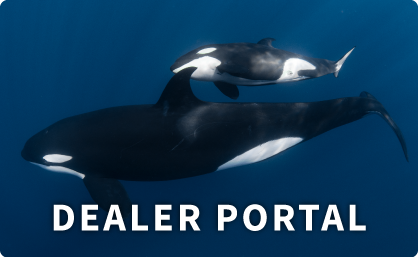

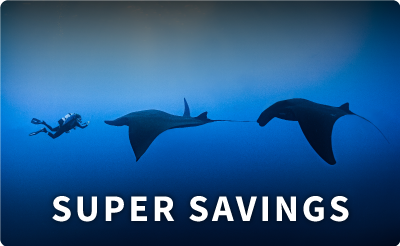
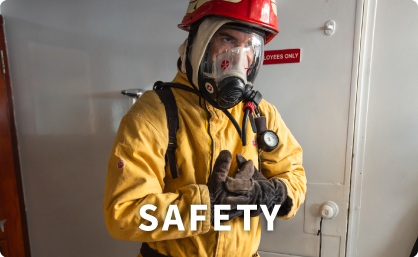
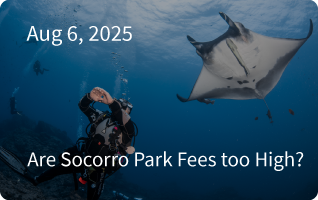
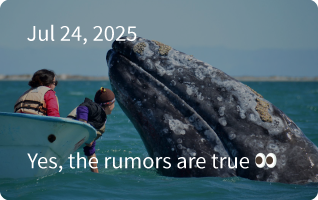
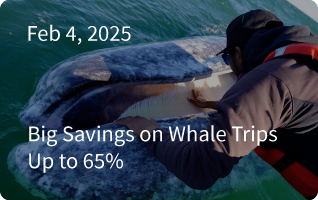
1 reply on “Some really BIG sharks at Clipperton Island, discovery of an anchor from a spanish galleion, a moray eel attack and a fishing accident – Guest log – April 21, 2010”
Accomplishment.